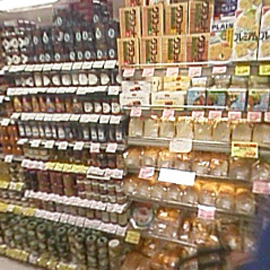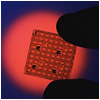
Japanese supermarkets carry both traditional and western foods. To enter this virtual reality scene, click on the Audio-Video link below.
The Changing Japanese Diet
The daily diet of the Japanese people has changed drastically over the past years, with corresponding changes in agricultural production. In the early postwar years of food shortage, people ate sweet potatoes, barley and millet more than white rice, which was scarce and expensive. Vegetables and fish in small quantities served as side dishes.
Although rice regained its traditional place at the center of the preferred Japanese diet by the early 1950s, western staples of meat, bread, and dairy products soon made inroads. Many people credit the national school lunch program with changing the diet preferences of the younger generation because it served milk and a roll along with a hot dish.
Japanese now eat much more meat, bread, and dairy products, while consumption of rice has declined. By the 1970s, western style restaurants and fast foods further changed the eating habits of urban Japanese. Instead of the traditional diet of rice for breakfast and dinner and noodles for lunch, most urban Japanese now eat a western breakfast and lunch, with rice remaining the staple food only for most dinners.
Click on CHARTS, below, to learn more about changes in the Japanese diet.
|

